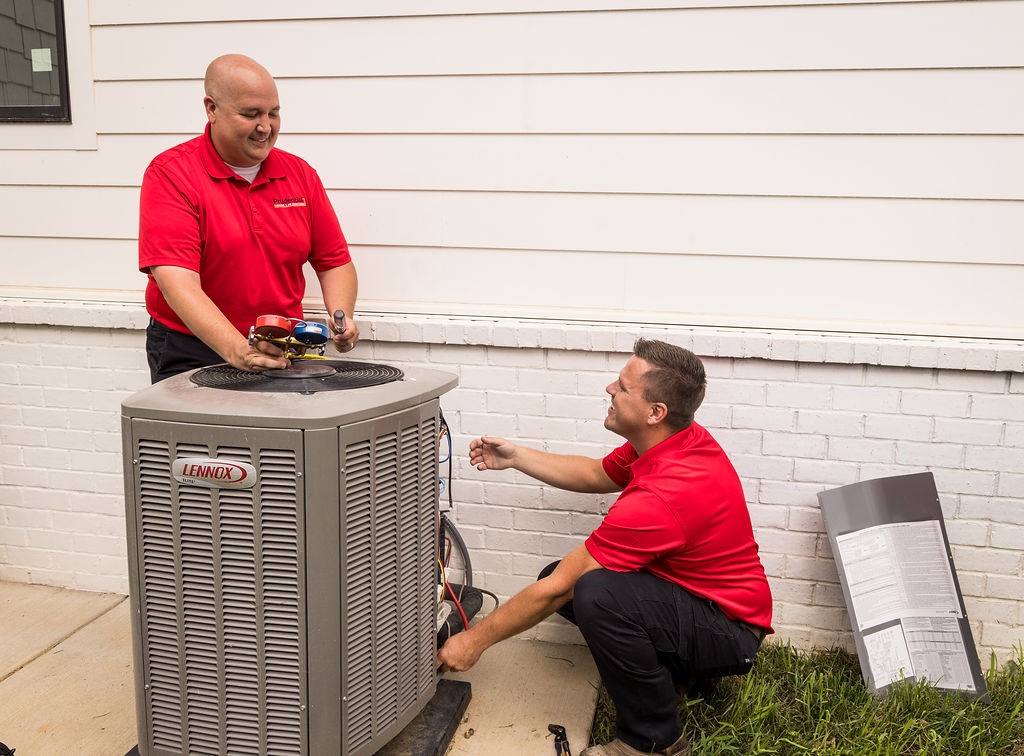
Heating and cooling systems are important investments for homes. Comfort is what many people first think of, but in truth HVAC maintenance tasks can actually preserve the integrity and value of your home. That's because breakdowns and malfunctioning run the risks of issues like frozen pipes that burst, mold growth from unmitigated humidity, and overflowing drain pans that could cause water damage.
Professional maintenance from Prudential Heating and Cooling mitigates against HVAC systems having issues that grow into big problems.
Below, we go over simple maintenance steps that extend HVAC lifespans, improve energy efficiency, and potentially save money on utility bills.
Dirty filters restrict airflow and force the system to work harder, consuming more energy overall. When checking filters, a good rule of thumb is to hold it up to light and see whether light gets through it. If it is too dusty for light to be visible on the other side, then it is time for replacement.
Depending on pet ownership, allergies, and system usage, you may want to more regularly replace the filter.
What can also be useful is monthly cleanings of the air filter, which can expand the lifespan of it.
Supply and return vents should be clear of furniture, curtains, rugs, and toys, among other objects that could block airflow.
Obstructed airflow creates pressure imbalances and makes the system less efficient. In addition to making the system work harder, this can also create uneven temperatures throughout the home.
Clean vent covers regularly to remove dust buildup.
Properly functioning outdoor condenser units require breathing room.
Maintaining at least two feet of clearance by removing or trimming the following:
Cleaning the unit is also good. Remove accumulated dirt and pollen from the exterior fins.
Bent fins restrict airflow and reduce efficiency. Straightening bent fins can make a noticeable difference in system performance, especially if several fins have been damaged by weather, debris, or lawn equipment.
Air conditioning systems produce condensation that drains away through a pipe, typically located near the indoor unit.
Drain lines can get clogged with algae, mold, and debris, which can lead to water damage or system shutdowns. Flushing a condensate drain line with a cup of warm water mixed with either vinegar or bleach and water can prevent clogs, keeping the line flowing freely. Standing water in the drain pan is a sign it is time to clear the line or call for professional service.
Additionally, look for any leakage around the indoor unit for signs of issues.
A thermostat is like the brain of an HVAC system. Test the thermostat by switching between heating and cooling modes to see whether the system responds appropriately.
Check the settings on programmable smart thermostats to review that it matches your current schedule.
Make sure to replace batteries every year instead of waiting for the batteries to die. This small expense can be critical for making sure you have a properly functioning thermostat, which significantly affects comfort levels and energy bills.
Same goes for carbon-monoxide detectors. Making sure these are working properly can be essential.
Most ductwork is hidden, but examining visible ducts in the basement, attic, or crawl space can give you valuable insights into the health of your HVAC system.
Obvious gaps, loose connections, damaged insulation, and air leaks are all cause for concern. Seal small gaps with mastic sealant or metal-backed tape instead of regular duct tape, which deteriorates quickly. Properly sealed ducts improve efficiency by up to 20 percent.
Just as your outdoor unit should have the area around it cleared, your furnace or air handler needs space too.
Clear the area around indoor equipment. Storage, cleaning supplies, paint, and other household items should be at a remove from the unit.
Gas furnaces especially need proper ventilation for safety. Vacuuming around the unit prevents dust from getting pulled into the system. Clean environments reduce fire hazards and overall help systems run well.
Unusual grinding, squealing, banging, or rattling sounds can signal issues. Catching problems early by listening to an HVAC system can help you get proactive in contacting professionals to prevent small issues from becoming major repairs.
Hearing something concerning means that you should shut off your HVAC system and contact Prudential Heating and Cooling for professional diagnosis.
Monthly utility bills with unexpected spikes in energy usage usually is a sign of an issue.
Other warning signs are if your home is not as comfortable as usual or is constantly running without reaching the set temperature.
Track how often the HVAC system cycles on and off. Short cycling or continuous operation can indicate potential problems that warrant professional attention.
Twice-yearly professional maintenance around the change of seasons can be excellent for detecting issues and making fixes before any major problems occur.
Having HVAC issues? Call the professionals at Prudential Heating and Cooling to get our advice and assistance!